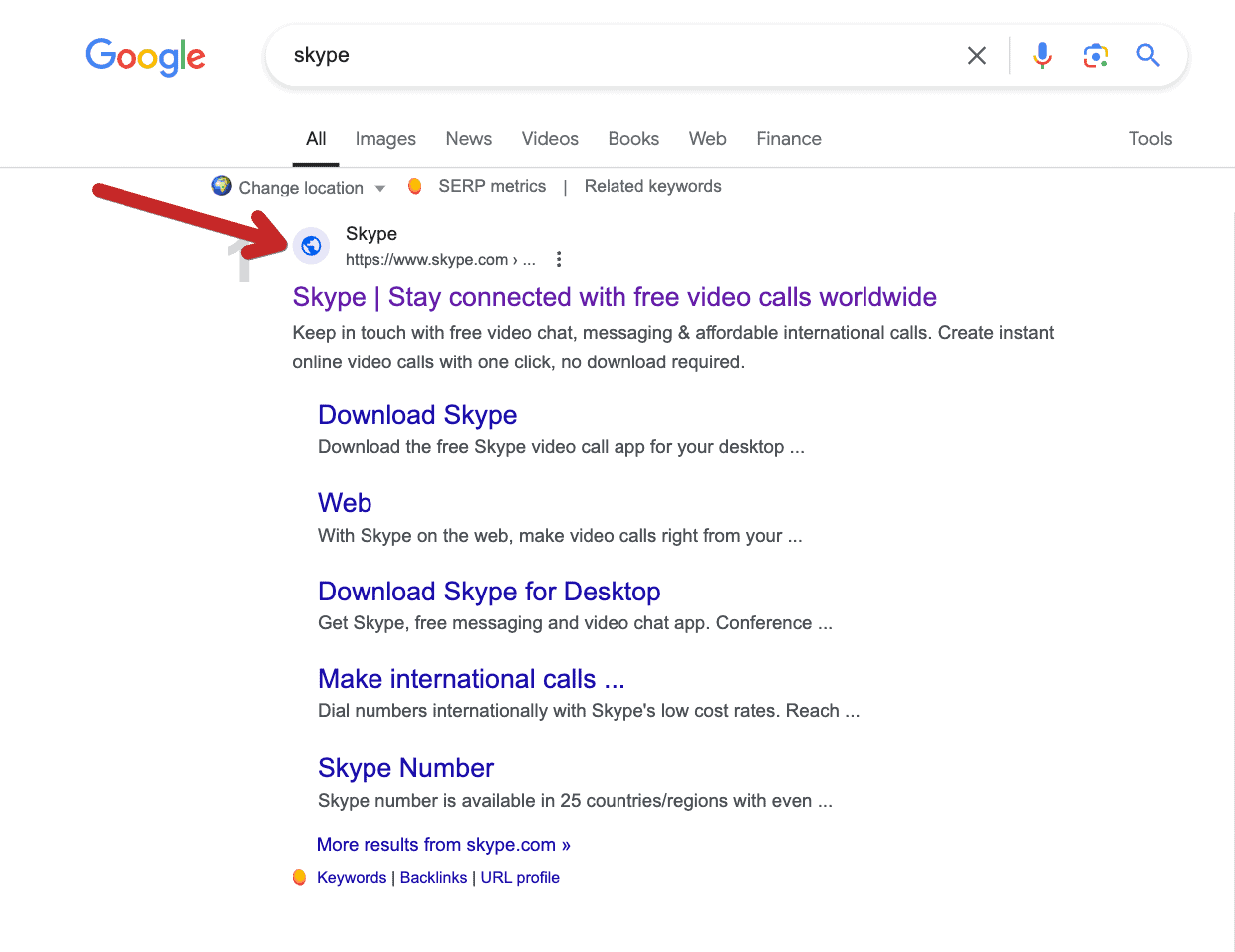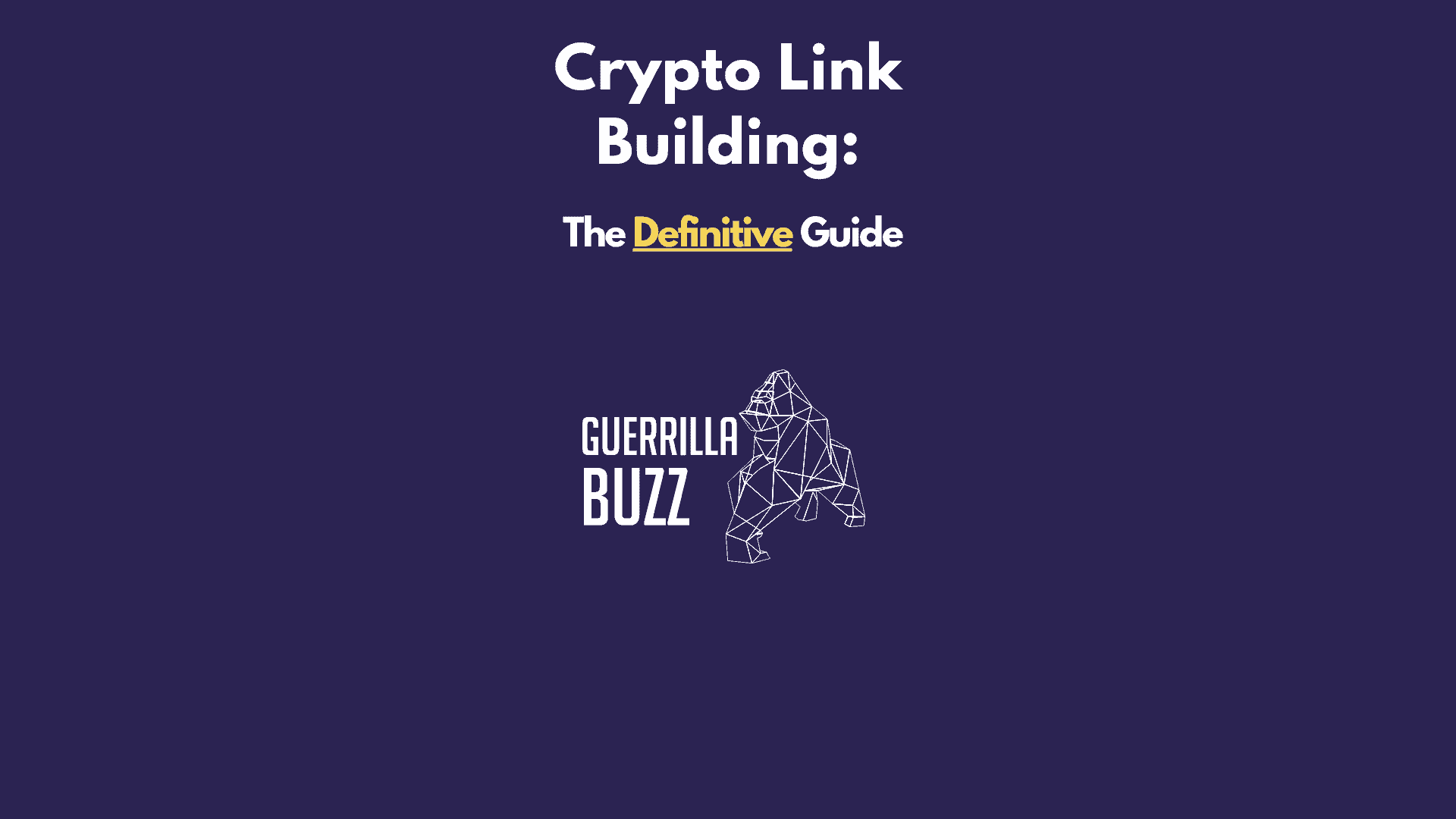In the competitive Web3 space, the key to success is boosting organic traffic, drawing in users and investors, and improving brand recognition through smart keyword ranking. Web3 SEO is vital for achieving these goals effectively.
This guide simplifies essential SEO elements, from Web3 keyword research and on-page optimization to link building and resource allocation, to develop an outstanding competitive strategy.
With a background in blockchain marketing since 2017, I’ve helped numerous companies enhance their SEO and content marketing. At GuerrillaBuzz, we specialize in launching effective SEO campaigns and comprehensive marketing support to transform Web3 companies into market leaders.
What is Web3 SEO?
Web3 SEO, or Web3 Search Engine Optimization, refers to the process of increasing the organic (unpaid) traffic to your Web3 project from search engines. This involves a combination of strategies, such as producing high-quality content fueled by exhaustive keyword research, fine-tuning content based on search engine standards and user experience insights, designing a user-friendly website architecture, among other tactics.
Web2 vs Web3 SEO: A Comparative Overview
SEO has evolved significantly with the evolution of the web itself. As we transition from a Web2 to a Web3 environment, SEO strategies must adapt to these new paradigms to remain effective. In a decentralized Web3 ecosystem, traditional Web2 SEO practices may not yield the same results. The audience, focus, and trust-building mechanisms have shifted, creating a unique set of challenges and opportunities.
The table below provides a comparative overview of the key differences between SEO in Web2 and Web3. Understanding these differences can help SEO professionals develop more effective strategies tailored to each environment.
| Web2 SEO | Web3 SEO | |
|---|---|---|
| Audience Type | Mostly non-technical, varies by company | Both technical and non-technical audiences |
| SEO Focus | Traffic through keyword optimization | Building brand authority & project simplification |
| User Trust | Based on reviews on Google, rating websites | Requires creative activities like AMAs, team visibility |
| Content Strategy | Broad content for wider audience | Focused on both technical content and simplified explanations for non-technical audiences |
| Campaign Goals | Engagement and conversion | Gaining credibility, attracting investments, building brand authority, and becoming market leader |
| Link Building | Lower cost, variety of websites | More expensive, limited high-quality crypto content sites |
| Website Structure | Simpler, assets on root domain | Complex ecosystems, extensive use of subdomains, focus on smart internal linking |
| Market Standards | SEO is well-adopted and understood | Less emphasis due to bad practices inherited from the crypto industry |
The Importance of Web3 SEO
Driving growth in a Web3 company typically involves two digital strategies: Paid Marketing (PPC) and Organic Marketing. While PPC, including Google Ads and site banners, may provide an immediate traffic boost, it is prone to market volatility, competitor influence, and risks like ad click fraud.
PPC campaigns often depict a roller-coaster pattern – traffic surges post-investment, plateaus upon reaching the niche’s ad potential, and declines when new competitors emerge. Additional funding can temporarily elevate traffic, but the cycle inevitably repeats, making this approach less stable over time.
On the other hand, SEO, the cornerstone of organic marketing, follows a steady, upward trajectory. Although its results take longer to materialize, the consistent traffic growth offered by SEO eventually surpasses the fluctuating levels from PPC campaigns.
SEO builds diverse, sustainable traffic, enhances brand credibility, and provides resilience against market downturns and competition. Moreover, it signals your Web3 project’s long-term commitment to visitors, illustrating that you’re here to stay.
The subsequent illustration will offer a visual representation of these patterns, emphasizing the long-term stability and benefits of a well-implemented Web3 SEO strategy over PPC.

Starting with Web3 SEO Basics
Starting your Web3 SEO journey means knowing the basics. You need to understand how search engines work and how they decide what content goes on top. This basic knowledge is key to making your Web3 SEO efforts successful.
How Search Engines Work:
To grasp how search engines function, we can break down their operations into three primary tasks. Here’s a concise overview:
| Function | Description |
|---|---|
| Crawling | Bots discover and collect website data. |
| Indexing | Data is organized and stored in an "index". |
| Ranking | Algorithms present most relevant results for user queries. |
How Search Engines Rank Content:
After we understand how search engines work, let’s try to understand in a nutshell how they rank content.
| Criteria | Description |
|---|---|
| Relevance | Matches the user's query closely. |
| Authority | Trustworthiness, often measured by quality backlinks. |
| Usefulness | Depth and value of content to users. |
| User Experience | Site performance, mobile-friendliness, and navigation. |
| Personalization | Tailored results based on location and search history. |
For SEO pros diving deeper into Web3 SEO, here’s an advanced table, sorted by complexity:
| Factor | Insight |
|---|---|
| Keyword Relevance | A domain with relevant keywords can aid initial visibility. |
| User Engagement | Metrics like time on-site and bounce rate offer indirect SEO signals. |
| Domain History | Domains with longevity can have an edge, but prior penalties matter. |
| Internal Links | Distributing authority within your site via effective linking. |
| Fresh Content | Regular updates can enhance relevancy in certain niches. |
| Backlink Profile | Quality and quantity of external links remain pivotal. |
| E-A-T | Google's benchmark for content quality, especially for authoritative niches. |
| Content Depth | Detailed content that maintains its quality often has an edge. |
| HTTPS Security | A secure connection is a minor yet essential ranking factor. |
| Mobile First | Seamless performance on mobile is crucial in today's mobile-dominant web. |
| Structured Markup | Enhances SERP listings, potentially boosting click-throughs. |
| Speed & Performance | Quick-loading pages boost user experience and rankings. |
Mastering Web3 Content Marketing
Web3 content marketing involves creating and sharing articles, videos, images, newsletters, podcasts, interviews, infographics, and even ads for your company on platforms including your blog, social media, and more. The aim? To increase traffic, elevate brand awareness, and position your brand as a leading expert.
I’ve been deep in the content marketing world for years, both for my businesses and for clients.
Here’s my takeaway:
- Always prioritize genuine value.
- Aim for the reader’s reaction to be, “Wow, they’re giving away this quality information for free?”
Achieving these can make a difference. Readers will not just engage with your content; they’ll remember your brand and might even consider collaborating with you or spreading the word about your content.
But remember: content marketing isn’t just about ticking boxes. Even if newsletters are popular, they might not be the best fit for your Web3 audience.
A strong content marketing approach requires strategy.
Ask yourself:
- Where does my target audience spend their time?
- What kind of content truly resonates with them?
- How can I be present and valuable when they’re searching, assist them, offer insights, or leave a lasting impression?
These considerations are vital. They guide you in deciding where your efforts are best placed. For instance, you might discover that regular blog posts engage your audience more than a detailed ebook.
Once you identify where your audience is and what interests them, focus on those channels and consistently deliver high-quality content.
Essential Content Marketing Channels for Web3 Companies Today
Understanding the nuances of content marketing is just the beginning. It’s equally vital to identify the most relevant channels for promoting your content, especially in the rapidly evolving Web3 space.
Channel preferences shift over time. Rewind to 2017, when the ICO boom was in full swing. Bitcointalk forum was the go-to place for many companies. The ANN threads, where companies introduced their new projects, were buzzing with activity.
For instance, take a look at Ethereum’s ANN thread as a prime example:
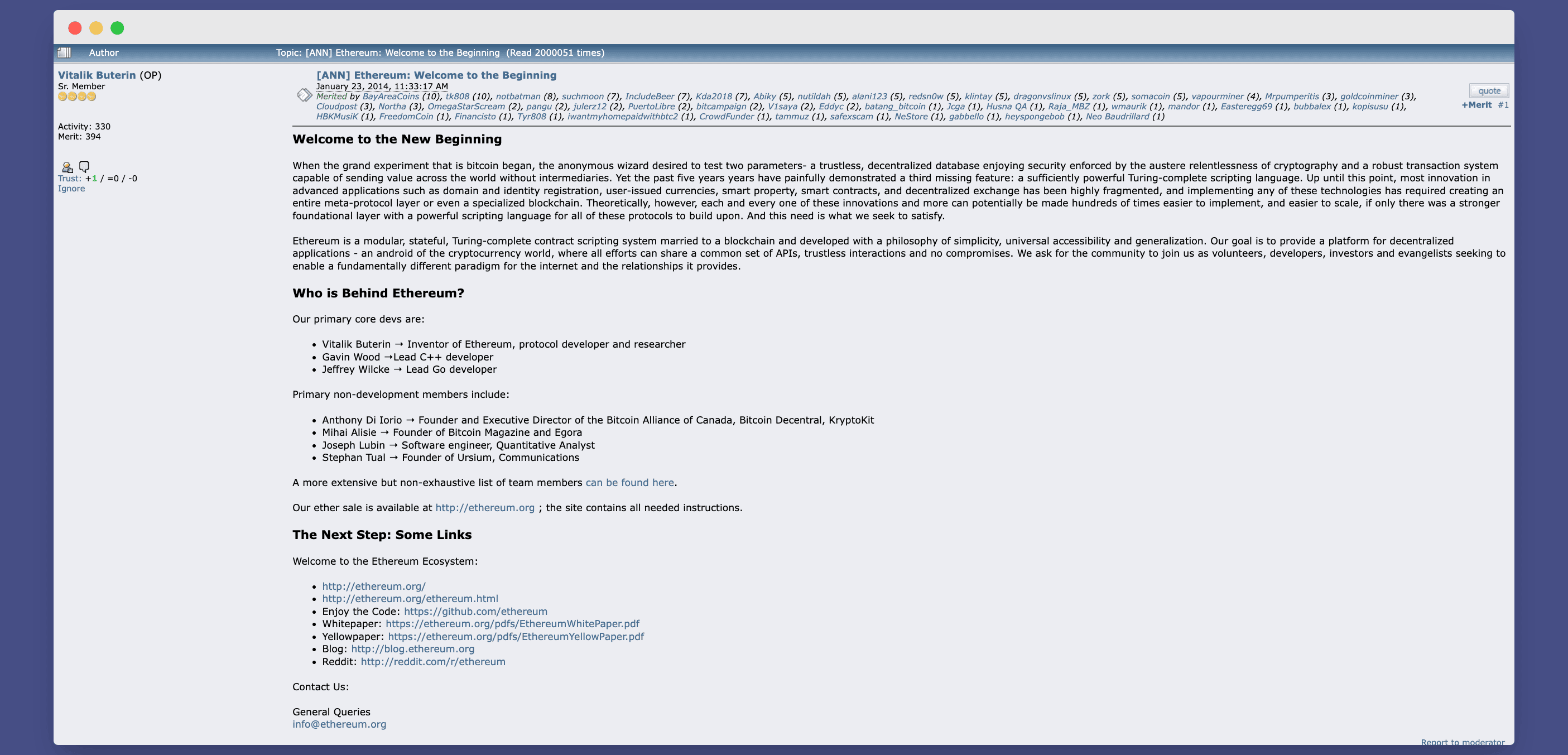
Fast forward to today, and the Bitcointalk forum barely gets a nod in content marketing strategies, underscoring how dynamic this space is.
Here are some currently relevant channels:
- Blog: It’s crucial to emphasize the importance of housing content on your own domain. Some Web3 companies choose platforms like Medium for their blogs. While Medium is user-friendly, it doesn’t confer SEO advantages because the content isn’t hosted on the company’s primary domain.Furthermore, the lack of customization means you can’t integrate clear CTAs, making the content less impactful than if it were on a proprietary blog. Hosting articles on your own blog not only boosts SEO but also gives you the flexibility to design content tailored to your audience’s needs.
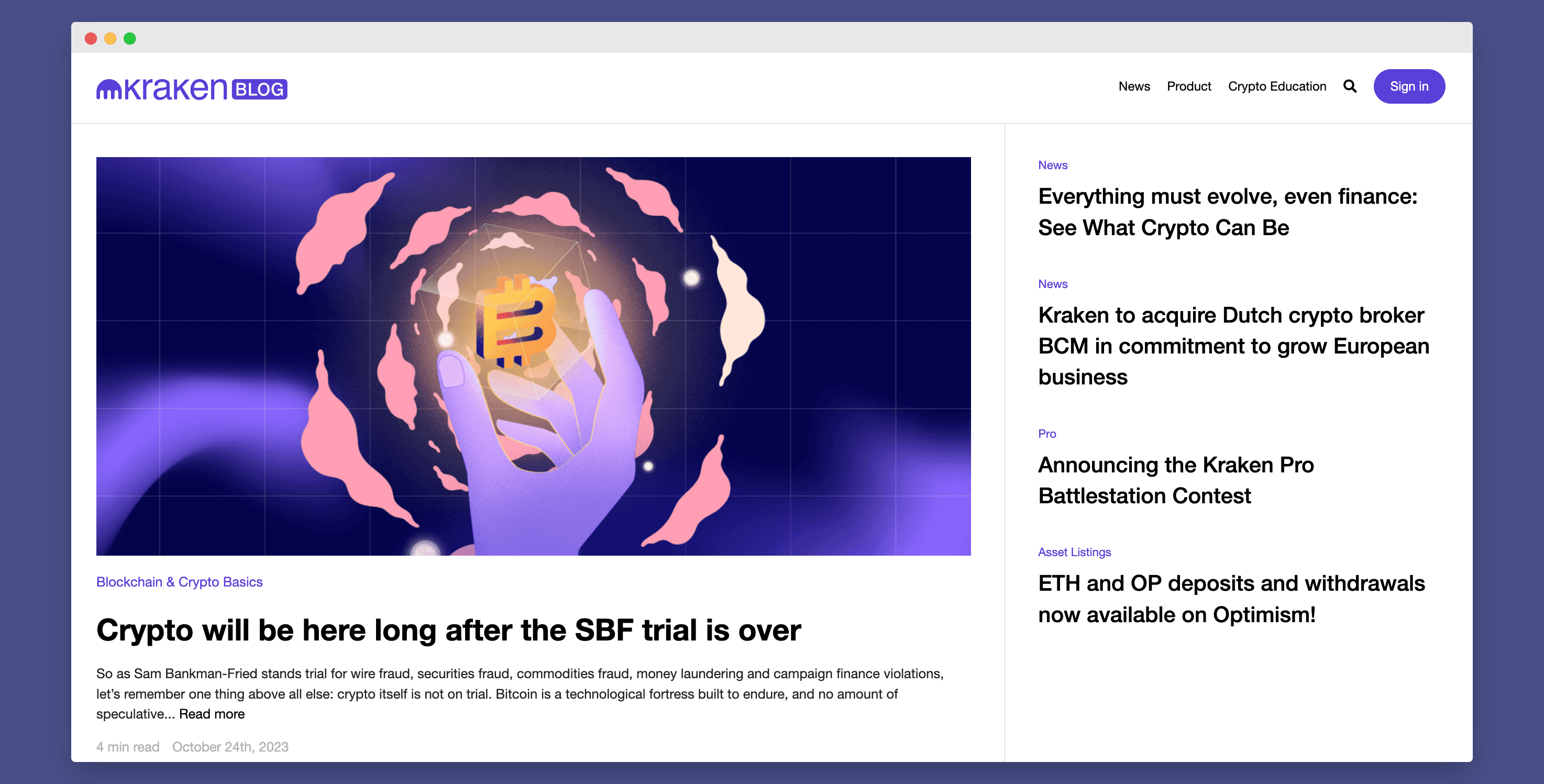
- Reddit: A hotspot for the crypto community, Reddit houses countless crypto and Web3 communities. By pinpointing your audience and mastering Reddit marketing, you can harness its potential for content marketing.From sourcing topic ideas to crafting engaging threads and sharing content in relevant subreddits, Reddit is indispensable for Web3 enterprises.
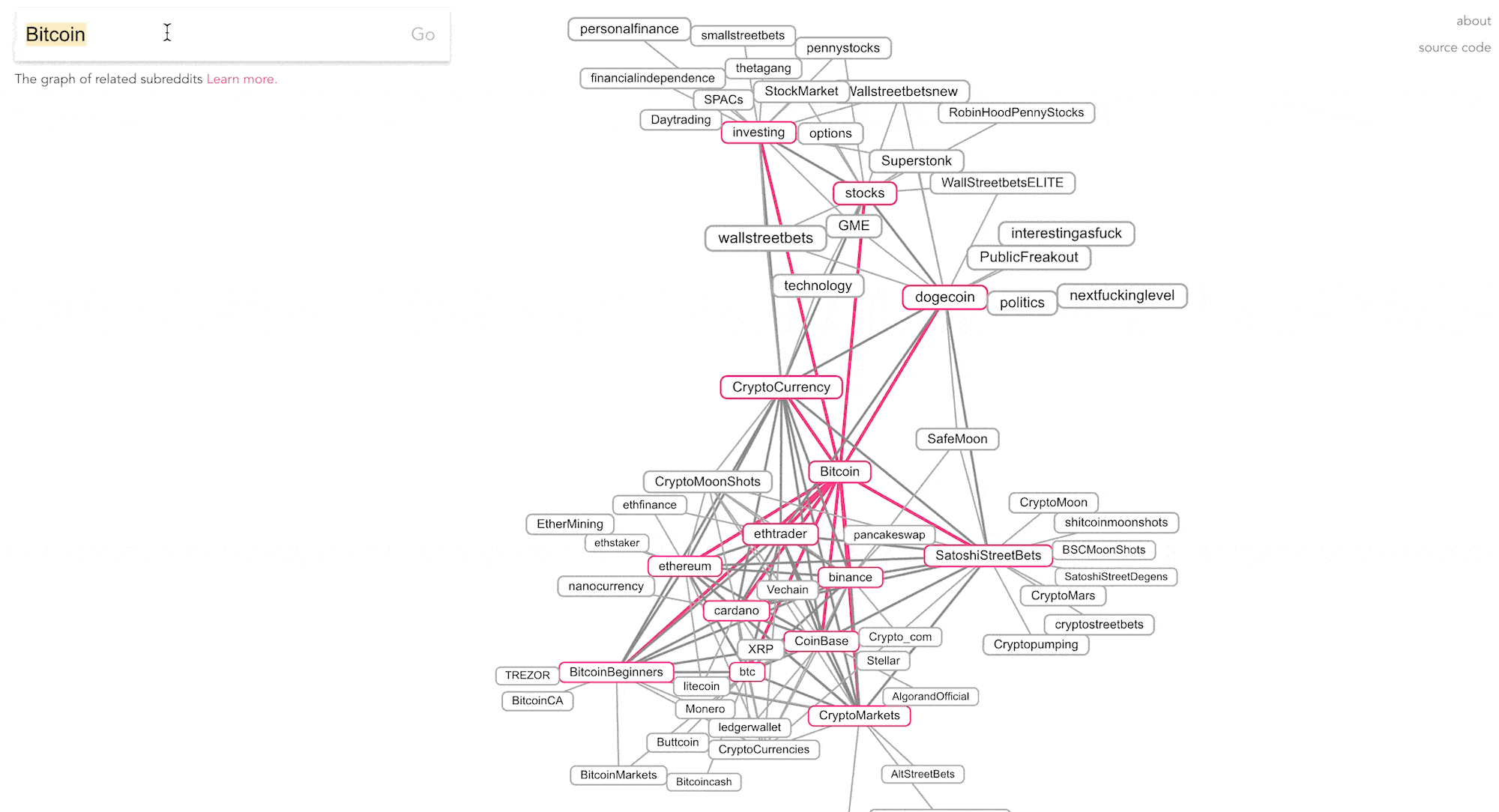
- Guest Posts: While crafting content on your own blog boosts SEO and organic traffic, guest posting offers the chance to tap into a potentially larger audience on established platforms. By contributing to diverse publications and news sites, you not only gain wider reach but also position yourself as an industry thought leader, enhancing brand trust, authority, and recognition both within and outside your niche.A common misstep by many Web3 and crypto companies is exclusively targeting industry-specific publications and news sites. It’s essential to think broader. Step outside the immediate ecosystem and consider where your target audience, as well as potential curious individuals, consume content online. Here are some examples of publications and news sites from varied niches:

Conducting Web3 Keyword Research
Keywords remain the backbone of SEO, even in the intricate world of Web3. It’s more than just pinpointing high-traffic keywords; it’s about grasping the unique terminology, idioms, and terms exclusive to Web3. By delving deep into keyword research, you can uncover golden opportunities and pull in the right traffic to your Web3 platform.
But how do you streamline effective keyword research for your enterprise? Here’s a step-by-step guide:
Brainstorm:
Collaborate with your team to identify potential keywords that resonate with your target audience’s queries. As an illustrative example, let’s consider a hypothetical project named “Wallet X,” which we’ll assume is a blockchain wallet.
When team members gather for a brainstorming session, they might come up with primary topics like the following, to give you an idea of the process:
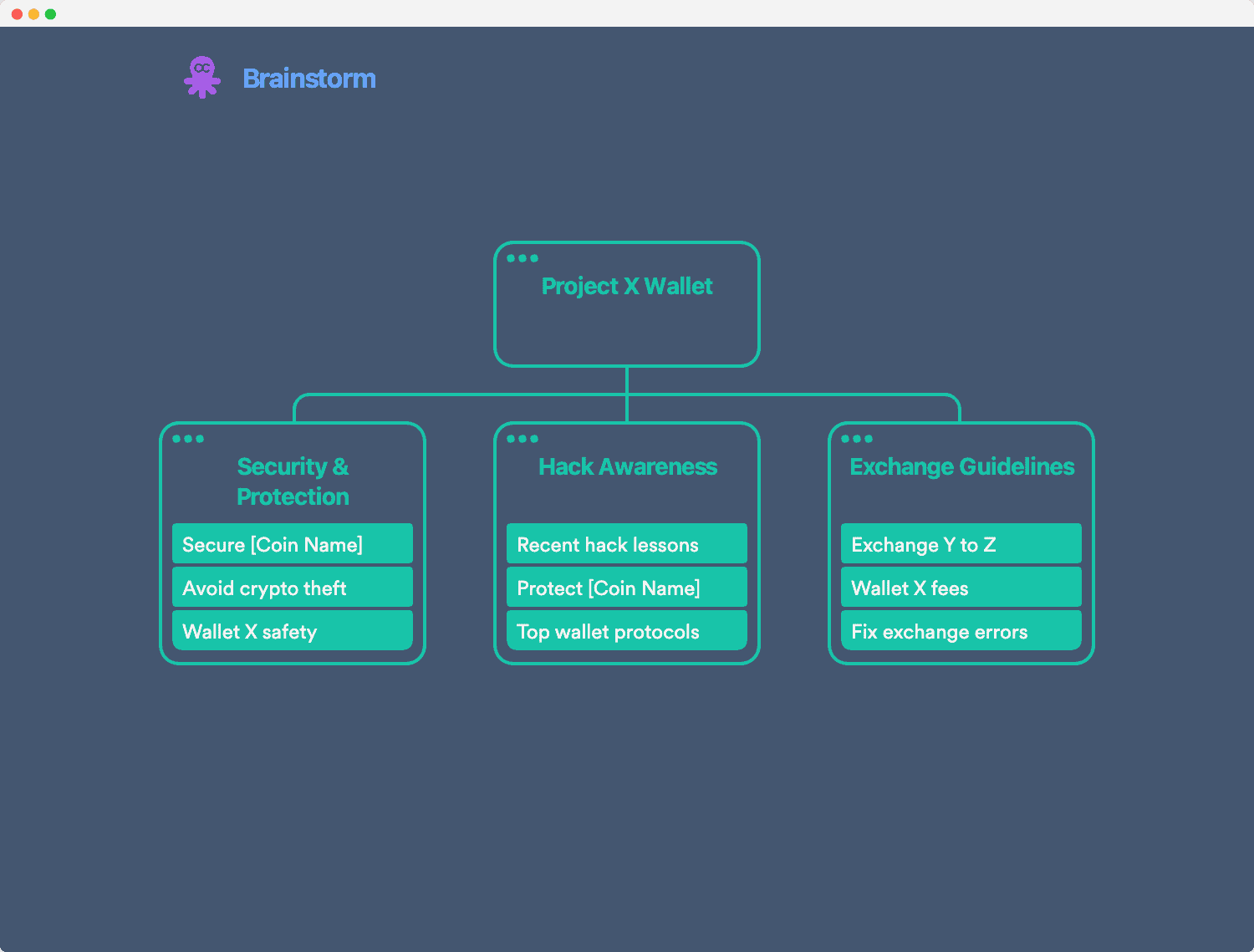
Research:
Delving deeper into keyword possibilities requires the right tools. Using robust SEO tools, like Ahrefs and Semrush, can provide valuable insights. These tools are not just about increasing your keyword list, but about understanding where these keywords stand in the vast digital landscape.
If mastering SEO tools seems difficult, partnering with an SEO agency can be a strategic move.
Either way, by analyzing competition, tracking search volumes, and pinpointing where searches originate, you’re better positioned to grasp the kind of traffic strategic content can attract.
Using our “Wallet X” example can illustrate the power of keyword tools.
Let’s say you search “How to store Ethereum.”
Though the search volume is low and competition is moderate, the search intent is strong.
When someone queries how to store a coin, they’re likely to act on that information.
This is just one example. There are numerous queries on storing different coins, representing just one search type from our brainstorming.
When done correctly, keyword research opens up vast opportunities.
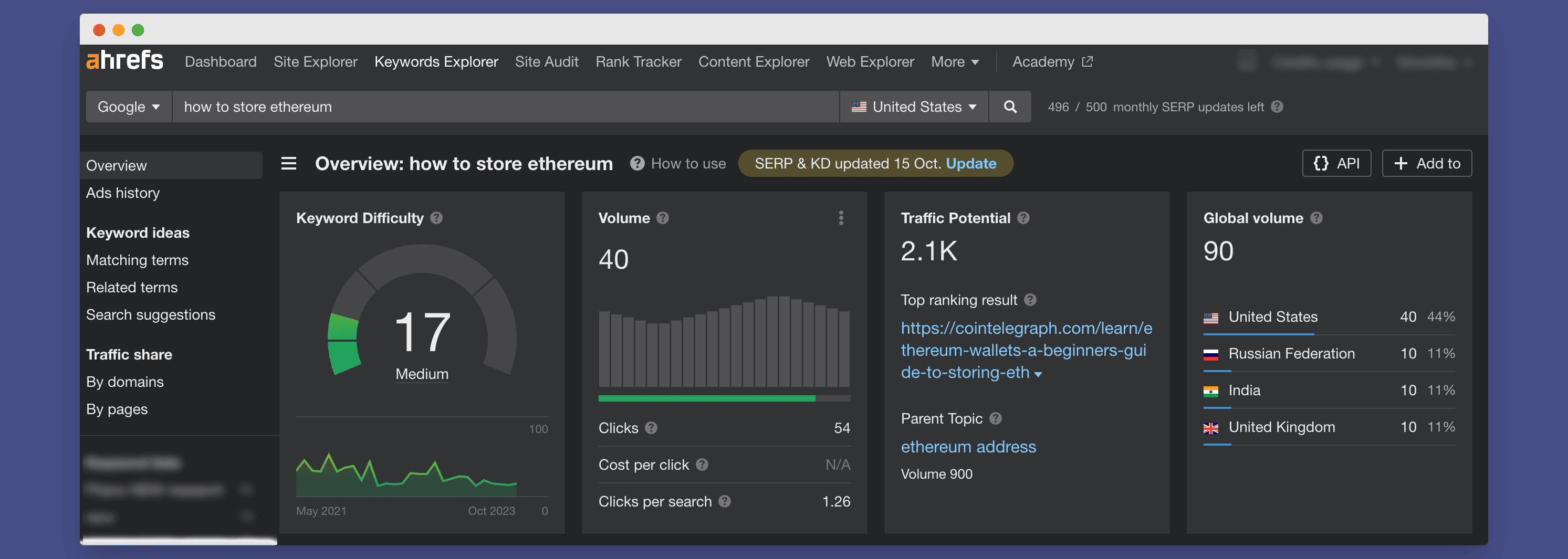
Prioritization
After your comprehensive research, you’ll be left with an array of potential keywords. The challenge now is to determine where to dive in first. I advocate for listing all the keywords in a spreadsheet and then ranking them from low to high based on their significance and alignment with your core product.
Additionally, I find it beneficial to group similar topic keywords together. For enhanced visualization, I personally use different colors for each group, offering a bird’s-eye clarity of the diverse keyword categories. Here’s a snapshot example of what keyword research might look like in a spreadsheet:
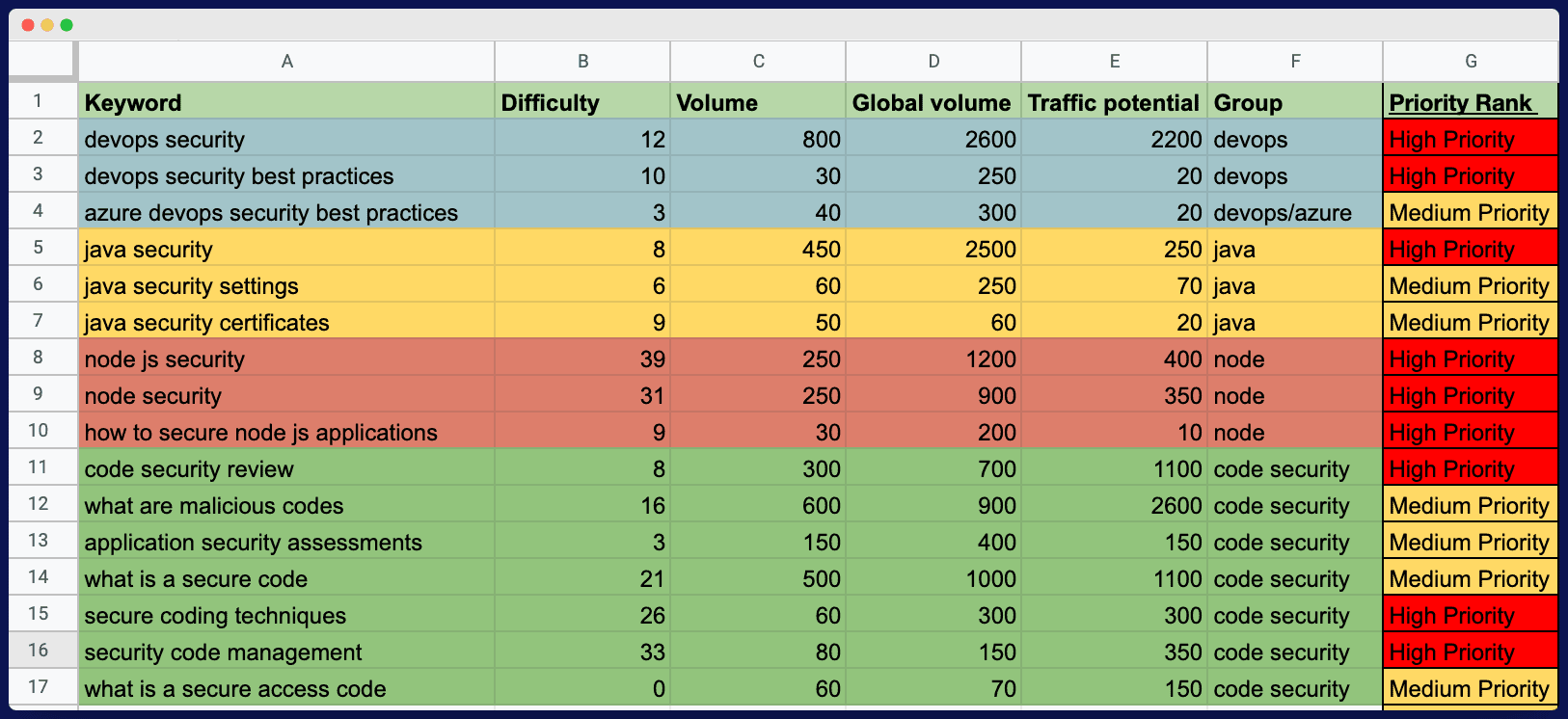
Keyword research example by Growtika
Content Crafting:
With your prioritized keywords in hand, it’s time to dive into creation. Focus on quality over quantity. Don’t merely rely on AI; infuse your articles with expertise and passion. Aim for content that educates, engages, and leaves an impression.
Optimizing On-Page SEO for Web3 Companies:
While in-depth content creation and keyword research are critical for SEO, another key piece in the puzzle is On-Page SEO.
On-Page SEO focuses on enhancing individual pages on your site to benefit both visitors and search engines. This includes ensuring fast load times, intuitive user experiences encouraging longer site visits, effective internal linking, precise meta titles and descriptions, structured headings, and ensuring site security.
Such practices are vital for Web3 companies looking to stand out in an industry where the importance of SEO is increasingly recognized. Below is a concise table highlighting essential on-page SEO factors and tips for optimization:
| On-Page SEO Factor | Description | Optimization Tip |
|---|---|---|
| Load Time | Speed at which your page loads. | Compress images, leverage browser caching. |
| User Experience (UX) | How users navigate and interact. | Keep design clean; ensure intuitive navigation. |
| Internal Linking | Links connecting pages within your site. | Link to relevant content and main pages strategically. |
| Meta Title | Title tag for search engines. | Include main keyword; limit to 60 characters. |
| Meta Description | Brief page summary for search. | Make it compelling; keep under 155 characters. |
| Heading Structure | H1, H2, H3 tags, etc. | Use keywords and organize content hierarchically. |
| Site Security | SSL encryption for data protection. | Transition to HTTPS; keep SSL certificate updated. |
| Schema Markups | Structured data to help search engines understand. | Implement relevant schema types (e.g., Product, Article). |
| Keywords | Target words/phrases you want to rank for. | Use strategically in content, meta title, and description. |
| Optimized Images | Enhanced images for fast loading and SEO. | Use compression tools, alt tags, and descriptive filenames. |
| Accessibility | Ensuring site is usable by all, including disabled users. | Implement ARIA attributes; ensure keyboard navigation. |
Web3 Link Building
Link building involves actively generating outbound links from reputable, high-authority websites to your webpages, with the objective to enhance your site’s rankings and authority.
Web3 Link Building Explained
In the context of the web3 ecosystem, link building refers to the process of obtaining backlinks specifically for companies operating within the blockchain, cryptocurrency, and decentralized technology spaces. The dynamics, challenges, and strategies of link building in this sector often differ from traditional industries, influenced by the unique history, regulations, and nuances of the web3 world.
The Landscape of Web3 Link Building
The web3 link-building landscape is notably distinct. Costs for obtaining links in the blockchain realm are often unjustifiably high, a remnant from the bans on crypto advertisements during the ICO bubble era.
When major tech corporations blocked crypto ads, many news outlets and crypto-related publications witnessed a surge in demand for features and mentions, causing their prices to skyrocket. Though the sector has since evolved, these inflated prices remain.
Understanding Link Building Through an Analogy
Think of your content like it’s a blockbuster movie. When people watch and love it, they’re gonna tell their friends, right? Now, picture this: James Cameron, the guy behind “Titanic,” watches your movie and tells everyone it’s a must-watch. That’s a big deal!
In link building, it’s kinda the same. When a top-notch website links to you, it’s like getting a thumbs-up from the big players. It’s not just about any links, but the right ones.
A random link from a pet site to a web3 finance project doesn’t mean much. But get a link from a major finance hub? Now that’s the real deal. It’s all about who’s vouching for you and how relevant they are.
Smart Link Building Tips for Web3 Companies
- Quality Over Quantity: One powerful link from a high-authority, high-traffic site in your niche can eclipse dozens from weaker sites. It’s like having a top influencer vouch for you rather than dozens of unknown folks.
- Diversify Your Links: Don’t put all your eggs in the homepage basket. While many focus on their homepage, smart link building involves spreading the love across various pages like product pages and blog articles. This strategy not only feels more natural but it also safeguards you against unpredictable ranking fluctuations and competitors. Plus, it’s a clever way to distribute traffic evenly.
- Anchor Text Matters: A link is more than just a bridge—it carries with it context, delivered via its anchor text. If every site uses your company name as the anchor text, you miss out on diverse, keyword-rich links that tell search engines more about what your site is about. Mix it up to keep things fresh and relevant.
To encapsulate these insights, the table below provides a concise summary:
| Key Focus | Info | Impact |
|---|---|---|
| Quality Over Quantity | Prioritize links from high-authority, relevant sites. | One strong link can greatly boost your site's authority and rank. |
| Diversify Your Links | Don't just focus on your homepage. Distribute links across various site pages. | Reduces vulnerability to ranking fluctuations and diversifies traffic. |
| Anchor Text Matters | Mix anchor text to include more than just your company name; ensure diverse keyword use. | Enhanced SEO ranking and better context to search engines. |
Conclusion:
As the Web3 ecosystem emerges, there’s a clear need for SEO strategies tailored to its unique challenges. This article highlights Web3 SEO and the necessary activities for success. Key insights encompass the importance of organic marketing for sustained growth, the evolving dynamics of content marketing in the Web3 space, and the intricacies of Web3 link building.
Armed with this knowledge, crypto and Web3 companies can establish a strong, authoritative presence in this expanding digital frontier.
About the Author

Yuval is a savvy SEO and marketing expert with over a decade of experience. Specializing in the blockchain industry, he's the go-to guy for crypto companies looking to simplify their digital marketing strategies and achieve explosive growth. As a digital nomad and successful company builder, Yuval brings a fresh, creative perspective to every project he tackles.

